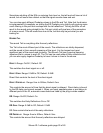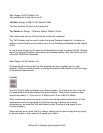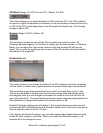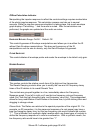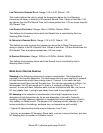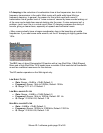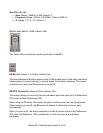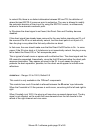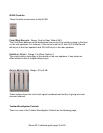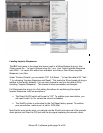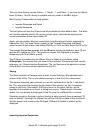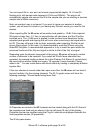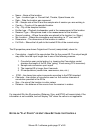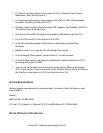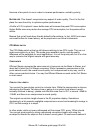Waves IR-1 software guide page 39 of 40
Here are a few points to use in order to increase performance, sorted by priority:
B
UFFER SIZE: This doesn't compromise any aspect of audio quality. Thus it is the first
place the user should try to optimize system performance.
A buffer of 512 is optimal. Lower buffer sizes will increase the peak CPU consumption.
Higher Buffer sizes may reduce the average CPU consumption, but the peaks will be
similar.
Beware that not all hosts have friendly default buffer settings. In fact, ASIO host users
use small buffers for lower latency, as do people who use virtual instruments.
CPU
MODE SWITCH
The CPU Mode switch at the top left allows switching to low CPU mode. This can cut
peak consumption by a third. This mode gives excellent results, and the quality
difference will be negligible for most applications. It is not the purist path, but it is a fine
way to convolve the original sample with good accuracy.
C
OMPONENTS
Efficient Stereo consumes the same amount of resources as the Mono to Stereo, and
about half of what the Full Stereo consumes. While it presents a compromise on the
purist natural reverb, the overall sound quality isn't compromised in any way, and it is
often a more practical choice. You may like Efficient Stereo as much as the Full Stereo
in most cases.
C
ONVOLUTION LENGTH
You can set the convolution control to a shorter time. While the compromise is obvious
(shortening the Reverb Tail decay time or gating it at a certain level where it would
naturally continue to decay), please note that the noise floor in IR-1 is around –92dB to
-106dB, and there is no compromise in sound quality.
The original convolution length shows in the IR properties display. Sometimes
shortening by a bit presents negligible compromise on sound and meaningful savings in
CPU, but the savings is in steps.
In other words, while not every millisecond will free some CPU, every 100ms should.
You can get great results by using a shortened convolution length and using the
envelope to smooth the slope so that it doesn't sound gated. On continuous material it



